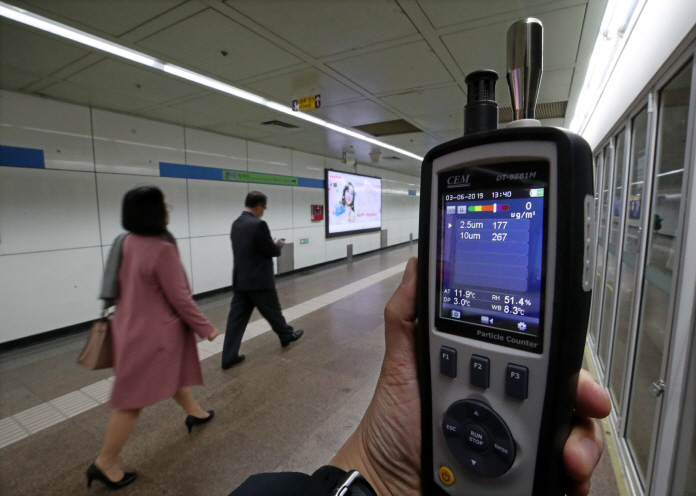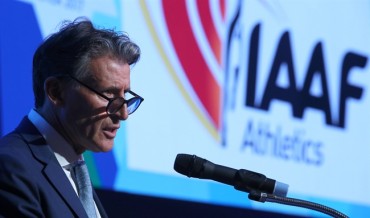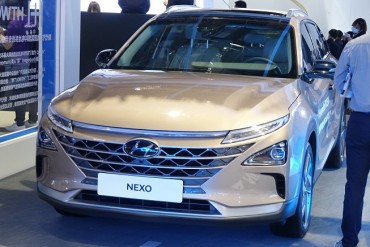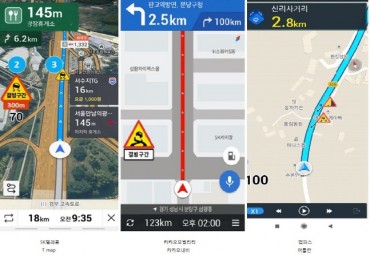
In order to create a pleasant public transportation environment, the government will continue to providing funding for improving air quality in subway cars and within stations that have high levels of fine dust. (Yonhap)
SEOUL, Feb. 5 (Korea Bizwire) — The government will push for a project to improve public transportation air quality by disclosing the concentration of PM 2.5, or fine dust particles smaller than 2.5 micrometers in diameter in real time at subway stations nationwide.
The Ministry of Environment said Tuesday that it has established a basic plan for indoor air quality control from 2020 to 2024, which includes such information, along with the Ministry of Land, Infrastructure and Transport, the Ministry of Education and the Ministry of Health and Welfare.
The basic plan describes the government’s mid- and long-term policy direction for indoor air quality management, which is established every five years.
First of all, the government will strengthen the institutional foundation for indoor air quality at multi-use facilities and encourage autonomous management.
To that end, the government will strengthen the management of air purification facilities and provide consulting on measuring and improving air quality at facilities that are used by sensitive groups, such as kindergartens, schools, daycare centers and nursing facilities for the elderly.
In order to create a pleasant public transportation environment, the government will continue to providing funding for improving air quality in subway cars and within stations that have high levels of fine dust.
The government also plans to install air purification facilities at all underground stations by next year.
In addition, the government will disclose the results of automatic measurements of ultrafine dust at underground stations across the country in real time and establish high-tech information communication-based air quality measuring networks such as Internet of Things on a trial basis on subway and railway cars.
Meanwhile, to improve the environment for co-habitation, the government will strengthen the management of building materials where high concentrations of radon, a carcinogen, can be released and support the management of ventilation facilities for individuals living in rental homes.
For new apartment complexes, the government plans to make it mandatory for professional institutions to measure air quality before inhabitants move in and to come up with measures to strengthen the standards for recommending indoor air quality for new homes by 2022.
Through the measures mentioned, the government plans to maintain the average concentration of ultrafine dust (PM-2.5) on public transportation at the “normal” level of 35 gg/m3 until 2024, the last year of the basic plan, and reduce the average concentration of fine dust (PM-10) at multi-use facilities below this level.
D. M. Park (dmpark@koreabizwire.com)






